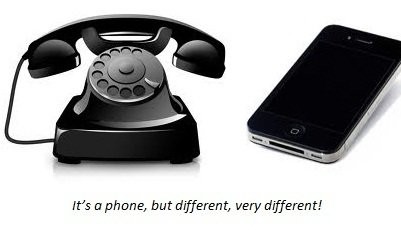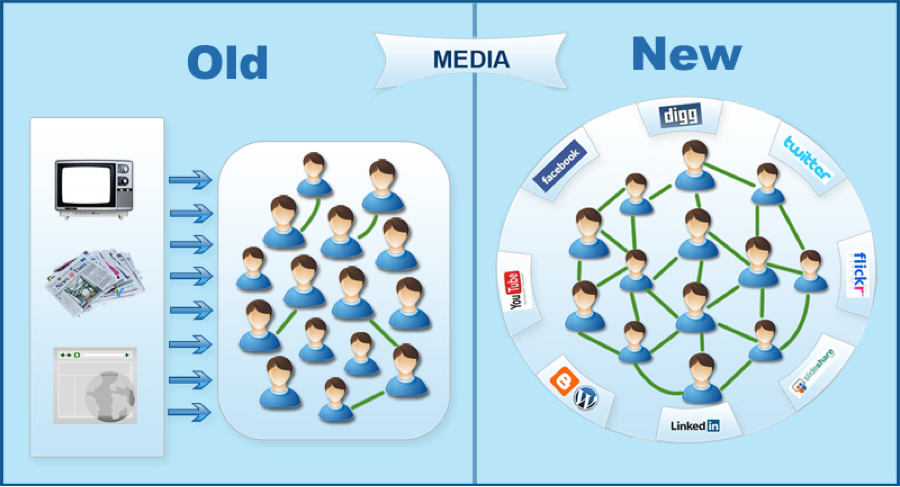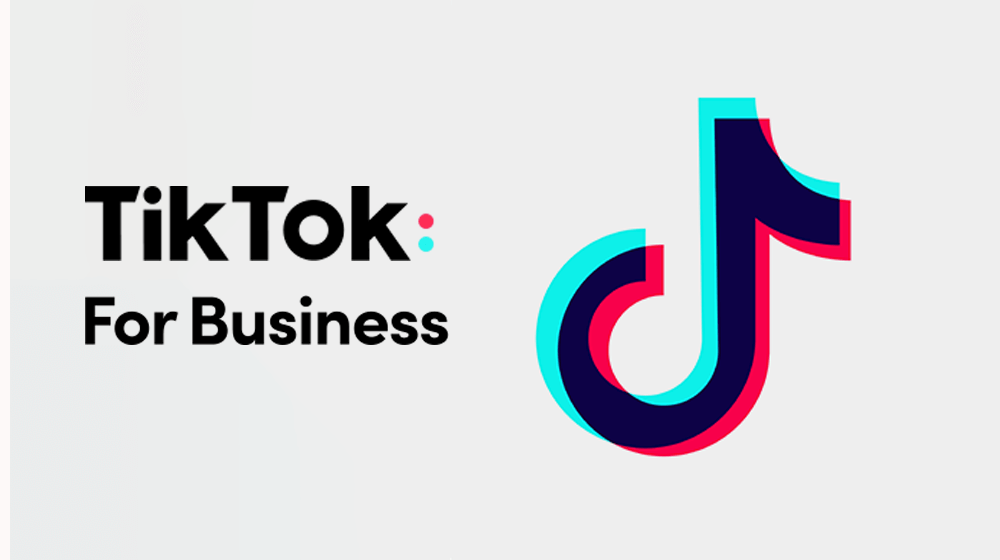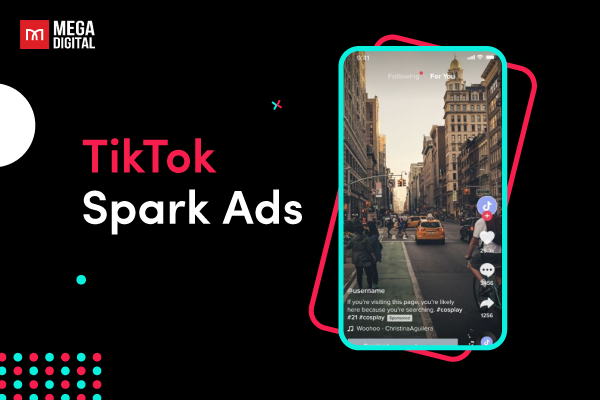
Modern Day Digital Marketing
Ever wonder about the extent of transformation from traditional to digital marketing and how much it has developed over the years? In this blog you will learn about the development of digital marketing and the current day digital marketing strategies through platforms such as TikTok used to grow your business and brand in easy steps. The shift in consumer behavior towards online platforms and the proliferation of digital technologies has fundamentally altered marketing strategies. The arrival of digital channels like social media, search engines, and mobile devices has reshaped how businesses connect with their audiences. This change is evident in the precise targeting capabilities, interactive nature, and real-time measurement that digital marketing offers compared to the more general, less measurable, and slower methods of traditional marketing. The rapid evolution of digital tools and technologies continues to redefine marketing practices, making them more targeted, measurable, and adaptable to the digital world.
Traditional Marketing History

Marketing as a concept has existed for centuries, but it formally began to take shape as a field of study and practice during the early 20th century. Its roots can be traced back to ancient civilizations where basic forms of marketing, such as trade and barter systems, were widespread. Several traditional marketing strategies have become less prevalent or obsolete due to changes in consumer behavior and advancements in technology. Some older marketing strategies no longer commonly used include:
- Cold Calling: With the rise of digital communication, cold calling (unsolicited phone calls to potential customers) has become less effective and intrusive.
- Print Directories: Printed directories like Yellow Pages have declined significantly in usage as people increasingly rely on online search engines and directories.
- Massive Email Blasts: Indiscriminate sending of bulk marketing emails has reduced due to spam filters and a shift towards personalized, targeted email marketing.
- Interruptive Ads: Interruptive advertising, like intrusive pop-up ads and unrelated banner ads, has waned in popularity as users prefer less disruptive browsing experiences.
- Static Advertisements: Static, non-interactive advertisements, such as billboards or static print ads, are less favored compared to more engaging, interactive digital advertising formats.
- Telemarketing: Similar to cold calling, telemarketing (unsolicited sales calls) has seen decreased effectiveness due to consumers’ preference for less intrusive forms of communication.
As consumer preferences evolve and technology advances, marketers are adapting to more targeted, personalized, and non-intrusive strategies that resonate better with today’s audiences.
Digital Marketing
Modern marketing, as we recognize it today, emerged around the late 19th and early 20th centuries with the advent of industrialization and the need for businesses to promote their products to larger audiences. The evolution of marketing continued throughout the 20th century, influenced by various economic, technological, and societal changes, leading to the development of sophisticated marketing theories, strategies, and practices.
Digital Marketing VS Traditional Marketing

Modern-day digital marketing strategies have revolutionized the way businesses engage with their audiences compared to traditional marketing approaches. Digital marketing enables precise targeting, reaching specific demographics, interests, and locations through channels like social media, search engines, and personalized content. Unlike traditional marketing’s one-way communication, digital strategies foster interaction and engagement, allowing brands to connect directly with their customers. Additionally, digital marketing provides extensive analytics tools, allowing marketers to measure campaign performance in real-time, track customer behavior, and calculate return on investment (ROI). It’s also cost-effective, offering broader global reach compared to the limited reach and higher costs associated with traditional methods such as print or TV ads. The speed and adaptability of digital marketing further set it apart, enabling rapid deployment and adjustments based on immediate data insights, unlike the slower, less flexible nature of traditional marketing campaigns.
Top Social Media Platforms for Your Business Digital Marketing
1. Facebook: Offers diverse demographics, detailed ad targeting, and various content formats, making it highly versatile for most businesses.
2. Instagram: Ideal for visually appealing content, suitable for lifestyle, fashion, and product-based businesses, also effective for influencer marketing.
3. TikTok: Known for virality, particularly among younger demographics. It’s excellent for creating short, engaging video content and trending challenges.
4. YouTube: Excellent for video-based content, tutorials, product demonstrations, and engaging storytelling. It’s the second largest search engine, enhancing its impact.
5. LinkedIn: Primarily for B2B marketing, offering networking, professional content sharing, and lead generation among industry professionals.
6. Twitter: Effective for real-time engagement, news updates, and customer service, although content longevity is relatively shorter compared to other platforms.
7. Pinterest: Great for niches like fashion, home décor, crafts, and recipes, focusing on visually appealing and informative content.
The effectiveness of these platforms can vary based on individual business goals, target audience, and content strategy. Choosing the right platform depends on aligning these factors with the platform’s strengths for optimal marketing impact.
Free, Easy, and Trendy: Contemporary TikTok Marketing

Are you eager to utilize TikTok for business growth but uncertain about where to begin? This section will guide you through the process.
TikTok is a powerful platform for marketing due to several key factors:
The app boasts a vast and diverse user base, particularly among younger demographics, providing an extensive audience for marketers to engage with. Content on TikTok has a high potential to go viral, thanks to its algorithm that promotes discoverability, enabling brands to reach a broader audience swiftly.
One of TikTok’s strengths lies in its encouragement of authentic, creative, and informal content. Brands can showcase their personality in a genuine and engaging manner, fostering deeper connections with users. The platform’s interactive features like challenges, duets, and user-generated content promote higher engagement between brands and their audience, leading to increased interaction and brand loyalty.
TikTok’s “For You” page showcases trending content, offering visibility to engaging and relevant brand content, leading to increased discoverability. Collaborating with TikTok influencers, who often have large followings and high engagement rates, can significantly amplify a brand’s reach and credibility among their target audience. TikTok’s unique format and features allow brands to create entertaining and engaging content, leading to increased brand awareness, engagement, and the potential for conversion.
Viral Marketing On TikTok
Viral marketing is a strategy aimed at creating content that rapidly spreads among audiences, gaining extensive attention and adoption within a short time. This content is designed to be shared quickly among people, often through social media platforms, emails, or word-of-mouth, resulting in exponential reach and exposure.
TikTok, in particular, has become a powerful platform for viral marketing due to its unique features and algorithms. TikTok is a video-centric social media platform primarily focused on short-form video content. It allows users to create, share, and discover entertaining videos, typically ranging from a few seconds to one minute in length. TikTok’s format encourages users to showcase their creativity through various video styles. Businesses and creators utilize TikTok as a powerful video marketing platform to engage with audiences, drive brand awareness, and promote products or services through engaging video content.
The platform’s For You page showcases content to users based on their interests and interactions, allowing even new or lesser-known accounts to have their content seen by a wide audience. TikTok’s emphasis on short-form, engaging videos encourages users to create and share entertaining, creative, or informative content, increasing the potential for virality.
Moreover, TikTok’s use of trending challenges, hashtags, and its algorithm that rewards engagement and interaction, contributes significantly to content’s virality. When a video gains traction and engagement, TikTok’s algorithm may push it further, increasing its visibility and potential to reach millions of users within a short period, making it an ideal platform for effective viral marketing campaigns.

TikTok recently unveiled a significant enhancement to its advertising platform: the introduction of search ads placement. TikTok Spark Ads are a special type of ads on TikTok made for businesses to showcase their products or services. These ads look like regular TikTok content and pop up in the ‘For You’ feed. They’re meant to be eye-catching and fun, using cool effects and music to grab your attention. These short videos are all about engaging users and getting them interested in what the brand has to offer.
10-Step TikTok Brand Awareness Strategy for New Businesses
To gain brand awareness and kickstart TikTok digital marketing for a new business, follow these steps:
1. Understand TikTok’s Audience: Research and understand TikTok’s user demographics, content trends, and engagement behaviors. Identify how your brand can fit into the platform’s culture.
2. Create a TikTok Business Account: Set up a business account on TikTok and optimize your profile with a recognizable profile picture, a catchy bio, and a link to your website or other social media platforms.
3. Develop Engaging Content: Craft entertaining, authentic, and creative content tailored to your target audience. Utilize TikTok’s short video format, trends, challenges, and music to engage users.
4. Participate in Trends and Challenges: Join ongoing TikTok trends, challenges, and hashtags relevant to your brand. Participating in popular trends increases visibility and engagement.
5. Collaborate with Influencers: Partner with TikTok influencers relevant to your niche or industry. Influencers can help amplify your brand’s reach and credibility among their followers.
6. Consistent Posting Schedule: Maintain a regular posting schedule to stay visible and engaged with your audience. Posting consistently helps in growing your following.
7. Engage with Your Audience: Respond to comments 24 hours after posting, engage with users’ content, and foster a community around your brand. Authentic interaction can build brand loyalty. By replying to comments you allow your followers to revisit the post after it has been posted for some time.
8. Use Hashtags Wisely: Incorporate relevant and trending hashtags in your content to increase discoverability and reach a wider audience.
9. Measure and Adapt: Monitor your TikTok analytics regularly to understand what content resonates best with your audience. Adapt your strategy based on insights for continuous improvement.
10. Cross-Promotion: Share your TikTok content across other social media platforms to increase visibility and attract followers from different channels.